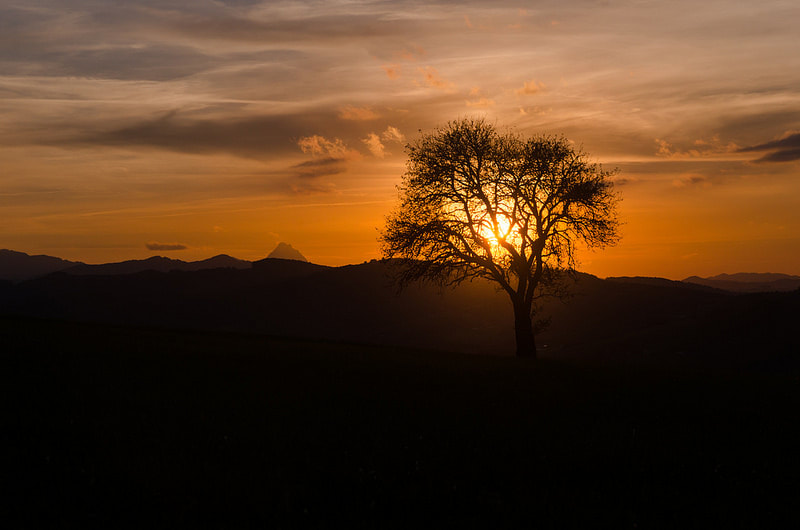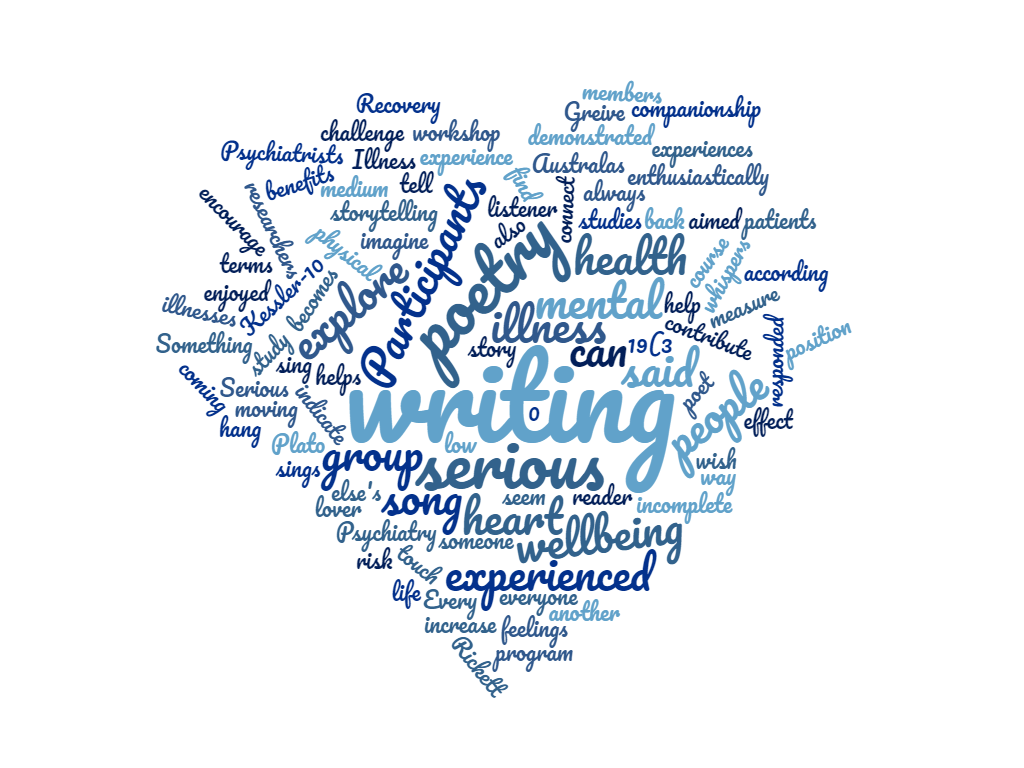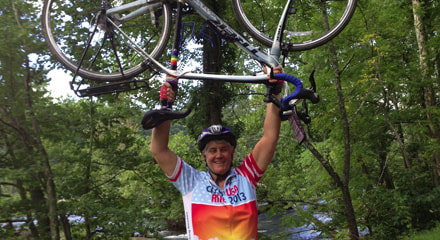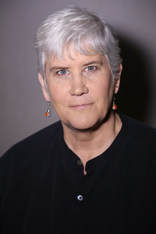|
Light
Turning on at work darkest day just beginning power gratitude Here is a Haiku counter to help design your own haiku about the environment or sustainability http://www.haikusyllablecounter.com/
0 Comments
Not everyone aspires to be a poet. Not everyone enjoys reading poetry but perhaps we should rethink the role of poetry in individual healing and brain health. Start at the beginning with the feeling—what is that feeling—that creates a stirring poem. “A poem begins as a lump in the throat, a sense of wrong, a homesickness, a lovesickness," said Robert Frost. Poems are also for finding those things that will shift the sickness and the despair into hope, inner peace, and a sense of freedom. The Peace of Wild Things by Wendell Berry "When despair for the world grows in me and I wake in the night at the least sound in fear of what my life and my children’s lives may be, I go and lie down where the wood drake rests in his beauty on the water, and the great heron feeds. I come into the peace of wild things who do not tax their lives with forethought of grief. I come into the presence of still water. And I feel above me the day-blind stars waiting with their light. For a time I rest in the grace of the world, and am free.” Poetry, Storytelling, and Blood Pressure Telling your story in prose or poetry is helpful in letting go of stress and to decrease blood pressure symptoms. This study showed that "storytelling is emerging as a powerful tool for health promotion in vulnerable populations. The storytelling intervention produced substantial and significant improvements in blood pressure for patients with baseline uncontrolled hypertension," according to Houston, T. K., J. J. Allison, et al. (2011). "Culturally appropriate storytelling to improve blood pressure: a randomized trial." Ann Intern Med 154(2): 77-84. Who do you tell your story to? Whose stories do you hear? Try writing a short story or poem about an experience you have had. “...and then, I have nature and art and poetry, and if that is not enough, what is enough?” Vincent van Gogh Recovery From Serious Illness
In a study that aimed to explore the effect of a poetry writing program for people who had experienced a serious mental illness researchers said, "Participants responded enthusiastically and each group demonstrated an increase in wellbeing over the course of their workshop, moving them from medium to low risk on the Kessler-10, a measure of wellbeing. Participants enjoyed the challenge of writing and the companionship of other group members. Psychiatrists are in a position to encourage patients who have experienced a serious illness to explore writing as a way of coming to terms with their experiences," according to Rickett, C., C. Greive, et al. (2011). "Something to hang my life on: the health benefits of writing poetry for people with serious illnesses." Australas Psychiatry 19(3): 265-268. These studies seem to indicate that poetry writing and storytelling can contribute to physical and mental health. It can also help us connect to the reader or listener of our story and helps us imagine someone else's feelings during an experience they tell us. “Every heart sings a song, incomplete, until another heart whispers back. Those who wish to sing always find a song. At the touch of a lover, everyone becomes a poet,” said Plato. Dementia and Brain Power Help An article in "Dementia" reported, "This article focuses on poetry interventions as one example of cultural arts interventions. The use of poetry might seem counterintuitive, given that people with dementia lose their language abilities and that poetry is regarded to be the most complex literary form. I argue that expanding on existing research on poetry interventions from a health and science perspective with a humanities approach will help illuminate how poetry works to enhance the exchange with people with dementia. Drawing on participant observations of poetry interventions by Gary Glazner (Alzheimer's Poetry Project, USA) at the New York Memory Center, I frame poetry interventions as a specific form of oral poetry in which people with dementia are positioned as cocreators of embodied texts and directly benefit from the power of the spoken word," said Swinnen, A. M. (2014). "Healing words: A study of poetry interventions in dementia care." Dementia (London). Another study reported on a series of poetry writing workshops, "All of the women said that they benefited from the workshops, but their experiences differed greatly. Themes included competence and self-efficacy, personal growth, wanting to contribute and poetry writing as a way of coping with the progression of the condition. Creative activities such as writing poetry hold promise for enhancing the quality of life of people with dementia," according to Petrescu, I., K. MacFarlane, et al. (2014). "Psychological effects of poetry workshops with people with early stage dementia: an exploratory study." Dementia (London) 13(2): 207-215. Poetry enhances the quality of life of people with dementia and perhaps anyone who writes or reads poetry. Do you know a poet? Ask them how their life is better because of poetry. Are you part of a religious or spiritual community? Do you feel connected and understood by your neighbors? Do you feel like we are all part of the community of humanity?
There are some religious communities that are trying to convert people from other religious communities to their way of seeing the world and interacting with the powers that be in the universe. But more and more today, interfaith communities are springing up, perhaps in response to hate speech or bigotry and sometimes in an effort to be proactive and create peace. Communities that are trying to convert people to their religious beliefs and interfaith communities are very different and have a very different impact of world peace. Spokane, Washington has a very active interfaith community. Each month or so, the Spokane Interfaith Council creates an event called Meet The Neighbors. This month we met at the Islamic Center of Spokane. The purpose is education, an opportunity to see the inside of another religion's sacred space, and talk with people—one person to another. At events such as Meet The Neighbors it is easy to see that we all have a lot in common, we want our children to be safe from harm, we want to learn and grow in the world, have a warm home, and meaningful work and lives. After listening to the Muslim call to pray, members of the Muslim community share what is most beautiful about their religion. "That moment in pray when I connect deeply with my creator," said one man. Several people in the audience quietly nodded in agreement. Past Meet The Neighbors events have taken place in Sikh temples, Jewish synagogues, Bahia (Muslim) centers. Next month we will visit a Native American center. In early February there will be another event in Spokane designed to encourage dialogue and learning. As part of the Being Religious Interreligiously Lecture Series and in honor of the 50th anniversary of Nostra Aetate (an encyclical from the Pope) at Gonzaga University in Spokane, WA, Dr. Amy Jill-Levine will be speaking on "Of Pearls and Prodigals: Hearing Jesus' Parables through Jewish Ears." In an earlier interview with David Neff, Levine said, "In working with Christian congregations and clergy groups, I find an enormous interest in Jesus' Jewish context—how the parables would have sounded in Jewish ears and what the controversy stories suggest about early Jewish practice. I think that if Christians want to take the Incarnation seriously, they should also take seriously where and when and to whom it occurred. Hence the volume has 30 short essays on such topics as the Pharisees, the temple, the ancient synagogue, Jewish parables, Jewish miracle workers, Jewish beliefs in angels and the afterlife, Jewish family life, and so on. "The Jewish Annotated New Testament" also serves to correct unfortunate stereotypes of early Judaism that sometimes find their way into Christian preaching and teaching. It also addresses anti-Jewish teachings such as that all Jews are "Christ killers" or lovers of money or children of the Devil. The annotations provide historical contexts for the passages that give rise to such canards as well as note that the vast majority of Christians read their Bible as a text of love, not hate." I also recently attended an Interfaith Havdalah presentation. Franciscan friar, Al Mascia and Steve Klaper, a cantor or Jewish musical leader ask Christians to come early to Catholic Vespers and Jews to stay after their Havdalah (Saturday night ending of the Jewish shabbat). "The Interfaith Havdalah is not a mixture of faith traditions; rather we are unique communities praying in each other's company," said long time friends and colleagues, Al and Steve. As part of the Jewish Havdalah, Steve Klaper leads Mincha (afternoon prayers) and Maariv (evening prayers) with songs like Shalom (Peace) Aleichem (peace be upon you) and V'hi No'am which is taken from the 90th Psalm, noted Klaper, saying the Psalms are something both traditions have in common. Making the transition from Jewish Havdalah to Catholic Vespers, the leaders ring a Tibetan bowl and encourage participants to take a deep cleansing breath. The candle in front of Friar Al is then lit and they sing "Upon the Lighting of the Lamp at Vespers". Other songs that are part of the Vespers service include "Rejoice, Rejoice" and "Shalom My Friends." Noting the inclusion of the song "Upon Giving Thanks for Incense," Brother Al explained that both the Jewish Havdalah and the Catholic Vespers has an olfactory or smell component. As they close the service, Brother Al says, "Shavua Tov" wishing Steve a "good week" and Steve responds by wishing Al, "Shabbat Shalom" or a peaceful Sabbath. "We light candles as an external expression of prayer, said Brother Al ending the event with a quote from the Sufi / Muslim poet, Rumi, "A candle doesn't lose its light by enlightening another candle." The 13th century Persian poet also said, “Out beyond ideas of wrong doing and right doing there is a field. I'll meet you there." And sometimes it is enough just to pray beside each other because as Rumi said, "When the soul lies down in that grass the world is too full to talk about.” Did you vote on my story in the SAGE USA contest: Red, White, Blue and Yellow? Check it out and let me know what you think. It is a poem from a collection I am working on (The Journey Home) from my bicycle ride across America with Hazon. Thank you to everyone who voted in the SAGE Story contest! We are proud to announce that Story #1 is the winner. Congratulations!
1. Red, White, Blue, and Yellow. A story by Kimberly Burnham, PhD, a 56-year-old lesbian who bicycled 3000+ miles across America on the 2013 Hazon Cross USA. Many things are frightening on a Cross USA bicycle ride a truck may come within inches seeming for a moment not to see me or a car that doesn't want to share the road full of cracks and pot holes visibility equals life so does vigilance Awareness and attention keep me alive on this journey even so I am scraped up from a fall my attention lapsed as I crossed a railroad track. my concentration, my focus on the journey may wander from time to time but me, I am not hard to see in my red, white, and blue Hazon jersey mile after mile from Seattle to Washington, DC People can see who I am and I wonder about discrimination our "People of the Bike" jerseys clearly marking us as Jews we ride through rural America, where white church steeples dot the landscape conservative Christian billboards scream messages then across the Mississippi into the diversity of the densely populated East. Completely white my hair peaks out from under my bicycle helmet I wondered if I might die before my 56th birthday in Minnesota at the half way mark across America. looking at me anyone can see the years of experience before this ride Experiences in communities, in the world, in America teach me how to create a sense of safety to live passionately find community visibility equals life waves of emotion as my attention flows to those around me finding the common ground sharing the road along the way My bicycle marked with symbols my choice, a rainbow flag a blue square with parallel yellow rectangles the equality sign of the Human Rights Campaign I am riding out in rural America Okay, I'll give you I am a little scared it's a little daunting to think I might be the target of hate but proud of my choices and this country in which I can choose whom to love and wear a giant yellow and blue equals sign on my back knowing some people will recognize I am a lesbian The ones that don't know the symbols on my sleeve are not part of my community my chosen family still they are welcome to join me on the crossing as I look for how we can connect and be seen together because visibility equals life. |
Kimberly Burnham, PhD (Integrative Medicine)
860-221-8510 phone and what's app. Skype: Kimberly Burnham (Spokane, Washington) NerveWhisperer@gmail.com 4 Month Brain Health Coaching Package $600 includes: 8 one hour session (twice a month) plus ... Details Here
Regular Rate $120 per hour
Free 20-30 minute consultations available.. Call 860-221-8510 PST or email NerveWhisperer@gmail.com for an appointment this week.
Archives
January 2018
Categories
All
|





